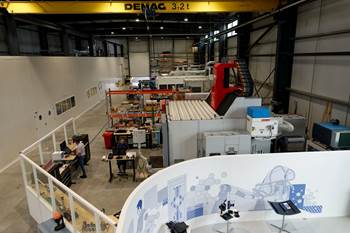Search Results
Showing 331 – 340 of 1112 results
Composite materials are engineered combinations of two or more distinct materials, merging their individual properties to create a new material with enhanced characteristics. Typically composed of a reinforcing phase (like fibers or particles) embedded within a matrix (often a polymer, metal, or ceramic), composites leverage the strengths of each component to achieve superior strength, stiffness, lightness, or other desirable attributes. Their versatility extends across industries, from aerospace and automotive to construction and sports equipment, where their tailored design and exceptional properties offer solutions for high-performance applications.
Recycling in composites manufacturing is an evolving endeavor aimed at addressing sustainability challenges. Unlike traditional materials, composites often pose recycling complexities due to their multi-component nature. However, innovative techniques are emerging to tackle this issue. Methods like pyrolysis, mechanical recycling, and chemical processes are being developed to efficiently recover valuable components from composite waste, such as fibers or matrix materials.
The fully recyclable, 3.80-meter foiling dingy concept, as demoed at JEC World 2023, sets the bar for watercraft that are accessible to a broad spectrum of sailors.
Vestas seeks areas where local recycling infrastructure is robust, and customer demand can be established. Recycling methods can include cement co-processing, gasification, development of new composite materials and reclamation.
Co-located R&D and production advance OOA thermosets, thermoplastics, welding, recycling and digital technologies for faster processing and certification of lighter, more sustainable composites.
US-based Vartega Carbon Fiber Recycling has begun characterization of its material, and has received a letter of support from Janicki Industries, which will start to assess the fiber as well.
Reseachers obtained a reduction in costs and energy consumption through the manufacture of three composite prototypes and confirm the feasibility of recycling and processing the resulting material.
Thanks to a new contract with IACMI, the CRTC will pioneer ways to automate processing of carbon prepreg scrap. This technology breakthrough is essential so recycled carbon fiber can be processed in high volumes, says CRTC.
Celebrating National Composites Week, CW shares ways in which composites continue to evolve the way we approach infrastructure projects.
Efforts include advancing NAFILean materials family in weight reduction and sustainability, as well as new Sustainable Materials division and R&D Center.
Applications and enabling technologies for carbon fiber promise new market penetration – challenges notwithstanding.
€213 million for Historhy Next project accelerates development of low-carbon raw materials and recyclability for composite tanks produced at Allenjoie plant, targeting 100,000/year.










